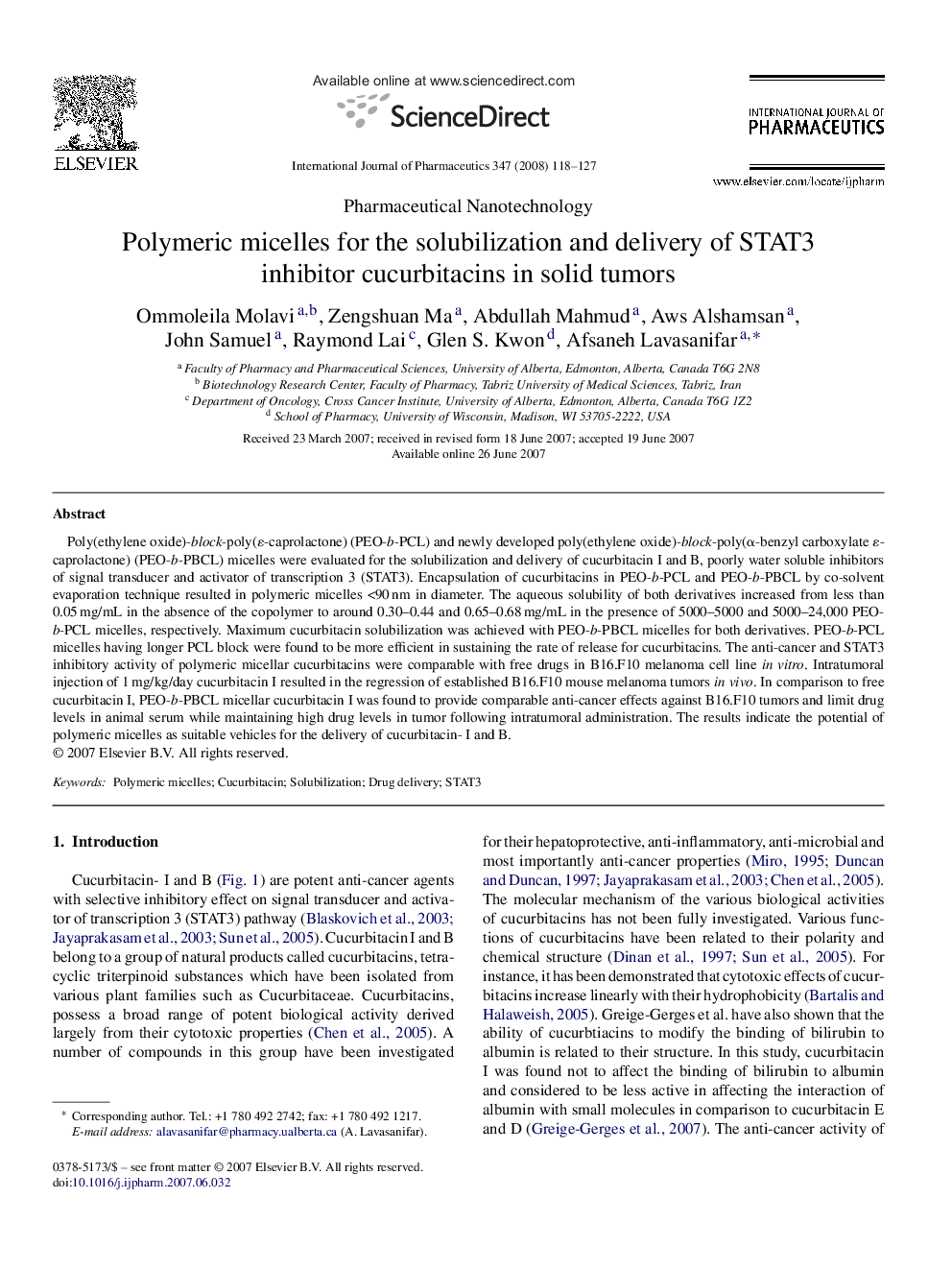| Article ID | Journal | Published Year | Pages | File Type |
|---|---|---|---|---|
| 2505922 | International Journal of Pharmaceutics | 2008 | 10 Pages |
Poly(ethylene oxide)-block-poly(ɛ-caprolactone) (PEO-b-PCL) and newly developed poly(ethylene oxide)-block-poly(α-benzyl carboxylate ɛ-caprolactone) (PEO-b-PBCL) micelles were evaluated for the solubilization and delivery of cucurbitacin I and B, poorly water soluble inhibitors of signal transducer and activator of transcription 3 (STAT3). Encapsulation of cucurbitacins in PEO-b-PCL and PEO-b-PBCL by co-solvent evaporation technique resulted in polymeric micelles <90 nm in diameter. The aqueous solubility of both derivatives increased from less than 0.05 mg/mL in the absence of the copolymer to around 0.30–0.44 and 0.65–0.68 mg/mL in the presence of 5000–5000 and 5000–24,000 PEO-b-PCL micelles, respectively. Maximum cucurbitacin solubilization was achieved with PEO-b-PBCL micelles for both derivatives. PEO-b-PCL micelles having longer PCL block were found to be more efficient in sustaining the rate of release for cucurbitacins. The anti-cancer and STAT3 inhibitory activity of polymeric micellar cucurbitacins were comparable with free drugs in B16.F10 melanoma cell line in vitro. Intratumoral injection of 1 mg/kg/day cucurbitacin I resulted in the regression of established B16.F10 mouse melanoma tumors in vivo. In comparison to free cucurbitacin I, PEO-b-PBCL micellar cucurbitacin I was found to provide comparable anti-cancer effects against B16.F10 tumors and limit drug levels in animal serum while maintaining high drug levels in tumor following intratumoral administration. The results indicate the potential of polymeric micelles as suitable vehicles for the delivery of cucurbitacin- I and B.
